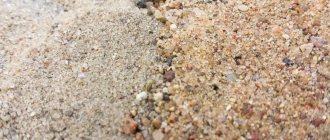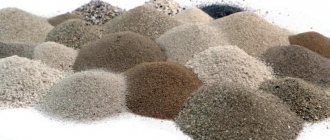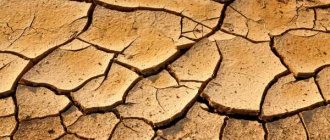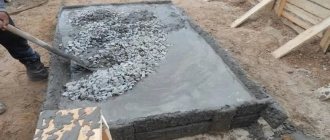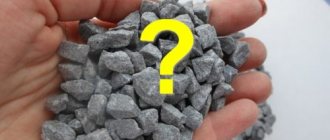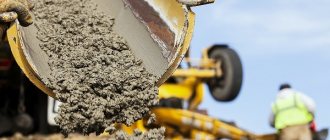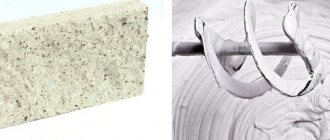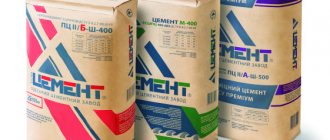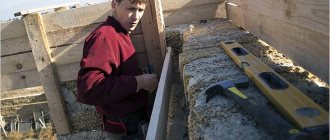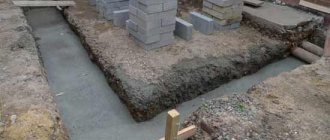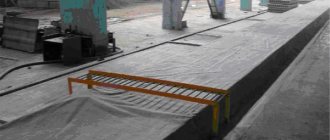Before starting construction work, many people pre-calculate the required amount of material. This is the right approach to such a serious matter. But at this stage, many questions arise. One of them: what kind of sand is needed for the foundation?
The choice of such material should be given special attention, since it is an important component, one of the main components used in the manufacture of concrete. The durability of the foundation—the future foundation of the house—will depend on the quality of the resulting mixture. The modern market offers a huge range of sand, both natural and artificial. The article will tell you how to make a choice so that the foundation does not suffer from it.
Sand Selection Basics
Even a person ignorant of construction issues can guess that only clean sand is suitable for the foundation. Initially, it may contain various organic elements: small twigs, grass, etc. This material is not suitable for construction work, so the sand must be sifted and cleared of foreign debris.
However, simple pouring is not enough when it comes to impurities such as lime or clay. Cleaning such sand is much more difficult, so when purchasing building materials you should immediately pay attention to this. It is permissible to contain clay in sand no more than five percent of the total mass, especially if a solution is being made for the foundation. Otherwise, after some time the structure will shrink, crack and will not be particularly reliable.
Swampy soil
Building a house in soil with high moisture content is even more problematic than on clay soil, so the foundation on swampy soil must be stronger and more stable. Generally speaking, three types of foundations are suitable for this type of soil:
- shallow belt;
- pile;
- slab.
To properly determine the best type of foundation, a soil type study must be performed. Most often, the construction of a foundation on bulk soil is required.
Checking the cleanliness of the sand
Before choosing what kind of sand you need for your foundation, you should check its cleanliness. A simple method is usually used for this. You will need any empty transparent bottle (glass or plastic). One third of it is filled with sand and half filled with water. Then shake the bottle vigorously so that the components are thoroughly mixed with each other. After that, they place it and wait for five to ten minutes. If the water in the bottle has become cloudy and dirty, then such sand is not suitable for the foundation. If a foreign substance appears on the surface, the layer of which exceeds half a centimeter, then such material cannot be taken either.
Now let's look at what types of sand there are.
Is a sand cushion even necessary?
Let’s say right away that a sand cushion must be installed under prefabricated foundations (for example, from FBS blocks). If this is not done, the load on the ground will be uneven. Because of this, the base may become warped and cracks will appear on the walls. Small sand particles allow you to properly distribute the pressure from the blocks to the ground. They will fill all the unevenness and prevent subsidence.
The same goes for a columnar foundation. If there is no reliable foundation under it, the building will warp.
Monolithic and strip foundations can be made without a sand cushion if the soil on the site is strong (for example, clay) and the groundwater is low.
For pile foundations, a cushion is not needed. The principle here is that the length of the pile allows you to reach hard layers of soil without digging deep pits and trenches.
But even when excavating soft soils with sand, they can only be partially replaced. The layer should not exceed 20-25 cm, otherwise the base will begin to sag.
One of the most common mistakes when arranging pillows is that they are poured in a high layer (up to half a meter or even higher), and compacted only on top. A minimum of effort - and a seemingly reliable foundation is ready. But what happens next? Uncompacted sand will begin to compact under its own weight and under the load of the foundation. This happens unevenly: somewhere there is more compaction (holes form there), somewhere less. As a result, the foundation warps and cracks appear in it.
If the aquifer is high, the sand cushion will be washed away. Its effect will be neutralized. Therefore, if there is a risk of foundation flooding, a complete drainage system should be equipped.
Next you will learn about which sand is best to buy for a cushion under the foundation of a house.
Quarry sand
These raw materials are extracted in quarries by breaking down rocks. An important indicator of the reliability and strength of quarry sand is its moisture content. An acceptable ratio is from one to five percent. Suitable humidity can be determined visually. It will not be possible to form a dense lump from sand - it will simply crumble.
The cheapest material is considered to be quarry construction sand. The price for it ranges from three hundred to seven hundred rubles per cubic meter. This is due to its low quality due to the large amount of impurities of clay and other substances. Nevertheless, this raw material is in considerable demand.
Drainage system
The drainage system is an important component that will allow excess moisture to be efficiently removed from the base. It is implemented quite simply. You will need plastic pipes that are used for external sewerage. A trench is dug around the perimeter of the house, into which geotextiles are laid, and prepared pipes are placed on it. They are closed into one circuit and a common outlet is made to the lowland. Pipes must be laid at a slope so that water flows freely. Holes are drilled in the walls of the pipes to collect excess moisture.
Types of quarry sand
Depending on the type of processing, quartz raw materials are classified as follows.
1. Sandy soil. This is an unrefined mixture with various impurities. As a rule, it is used to level summer cottages and fill trenches.
2. Washed sand. It is extracted from flooded deposits using hydromechanical equipment. The technology allows you to assemble the mixture without any impurities or unnecessary components. This material is used in the production of roads, paving slabs, concrete, bricks and reinforced concrete products.
3. Seeded sand. It is cleaned using a technical and mechanical method to remove large particles and stones. Typically, such raw materials are used to prepare a mass of plaster, masonry mortars and in the casting of stone products.
river sand
These raw materials are mined from the very bottom of freshwater rivers. It rarely contains organic compounds and impurities. Therefore, river sand is considered a pure and natural product, which is designed for multi-purpose use. This is an ideal material for laying the foundation, creating drainages and diluting mortars necessary for the interior decoration of the house. Due to natural polishing, river sand has a perfectly smooth shape and a fine fraction within two millimeters.
Thanks to all the listed advantages, this material becomes a universal and desirable, but rather expensive raw material for the foundation. Thus, the price of construction sand extracted from the river can vary from seven hundred to one thousand rubles per cubic meter.
Classification of river sand
Raw materials from the river bottom can differ greatly from each other. Therefore, you should understand the variety of grains of sand. They can be of several fractions: from 0.7 to 5 millimeters. The filling of small grains of sand shrinks and compacts strongly, so it is only suitable for lightweight buildings. The following types of bulk river material are also distinguished.
1. Coarse sand. These are pebbles about five millimeters in size. They are obtained by splitting rocks using special crushing and grinding equipment.
2. Coarse sand. It has an unobtrusive neutral color and is mined from dry rivers. Ideal for finishing and decorating a room.
3. Washed river sand. These are medium-sized grains. They are gray or yellow in color because they contain iron and silicon oxides.
Physical and mechanical characteristics
Volume weight
It shows the mass of 1 m3 of sand in its natural state (wet, with all impurities). On average, the volumetric weight of this material ranges from 1500 to 1800 kg.
The composition of construction sand is assessed according to the following parameters:
- Granulometric;
- Mineral;
- Chemical.
Granulometric shows the percentage of grains of different sizes. To determine it, sand is sifted through calibrated sieves (from 0.16 mm to 10 mm).
A sieve with aperture sizes of 5 and 10 mm reveals gravel granules. GOST allows the presence of grains measuring 1 cm. However, their quantity should be no more than 0.5% of the total mass of sand.
Granules larger than 5 mm are normalized as follows:
- Maximum content - up to 10% in natural;
- up to 15% in crushed;
- up to 5% in enriched sand.
Mineral composition
Based on mineral content, sands are divided into quartz, dolomite, feldspathic and limestone. Quartz sand is the most valuable for construction, since other types are not strong enough and are not resistant to chemical influences.
Chemical composition
It plays an important role in determining the suitability of bulk material in various fields of construction. Red, yellow, and orange shades indicate the presence of oxidized metals. Green and blue colors are characteristic of river sand, which contains aluminum salts.
Positive aspects of river sand
River sedimentary rocks have several positive qualities that are of great importance for foundation construction. They meet technical and aesthetic requirements, do not rot and are not exposed to aggressive environments. River sand is characterized by high moisture resistance and excellent sound insulation. It is also a safe and environmentally friendly material.
For the construction of multi-story buildings, only the large-fraction type is used, and for capital buildings, the medium-sized type is suitable. Also, river sand is ideal for landscaping areas, playgrounds, landscape work and decorating rooms.
Sea sand
Sea chips are also exactly the material needed for the foundation. Sand is initially no better than river sand, and sometimes even worse. This is due to the presence of organic impurities (algae, shells) and foreign objects. But sea sand must be cleared of foreign substances and washed, so it is considered clean and of high quality. Due to this, this material is the most expensive, and not everyone is willing to pay for it. It is more appropriate to use sea crumbs for construction where they are sold nearby and are cheaper.
Sand fractions
Any sand can be classified by its size. Experts distinguish the following types of fractions.
- Very thin. These are grains of sand about 0.7 millimeters in size. They are suitable for arranging playgrounds and are not suitable for construction.
- Thin. The grains range in size from 0.7 to 1.0 millimeters. This is not a dense material. This kind of sand cannot be used for construction, but it will be good for making lean concrete.
- Small fraction. It is grains measuring 1.5-2.0 millimeters. When using it, the consumption of cement mixture increases.
- Average. Grains (2.0-2.5 millimeters) can be used to create standard concrete.
- Large. Sand particles reach three millimeters in size. This fraction is ideal for diluting high-quality concrete mixtures that will be used in large-scale construction.
- Very large. The particles are more than three millimeters in diameter. They are added to the foundation cushion and used to distribute the mass of the structure.
Nuances
On swampy soils, it is in principle possible to construct a shallow strip foundation. But in this case, only frame or other lightweight structures can be built, since such a foundation on marshy soils is not able to withstand significant loads. In addition, under the tape you will need to fill according to the example of a slab foundation. The use of such a solution is allowed only after high-quality research into the soil layers that exist in a particular area.
If the owner needs to build a basement in a swampy area, then the first step is to carry out a full-fledged geological survey. If you do not use such services, then the simplest problem that may arise subsequently will be flooding of the basement. The worst case scenario would be complete destruction of the foundation. If during the research it becomes clear that the bottom is at a level of up to 2.5 meters, then the first step is to dig a pit below the freezing level of the soil.
During the process, water is pumped out and a drainage system is installed around the perimeter of the foundation of the building. The top layer of soil is removed because it cannot be used in construction. The next step is to fill the tape and backfill it with sand. Insulation and high-quality waterproofing in several layers are required. Additionally, a blind area is laid that will protect the soil around the foundation from freezing and heaving.
If the bottom is lower than 2.5 meters, then more measures will be required if you want to build a basement. One of them is the use of vertical drains for drainage. They are arranged in a checkerboard pattern. In this case, a step of 1.5 meters is observed. At the same time, the construction site is loaded. To strengthen the soil, it is necessary to backfill a mixture of gravel and sand two meters at intervals of six months. Liquid is pumped out from the drains periodically, which leads to the compaction of the embankment and the acquisition of the necessary strength for a high-quality foundation.
The main requirement when using a pile foundation is high-quality waterproofing of each pile. For these purposes, various types of material with which they are coated can be used. A drainage system must be constructed under the piles, which will promptly remove excess liquid and direct it to the drainage well, which is located at the required distance from the foundation.
Choosing sand for the foundation
So what kind of sand is needed, river or quarry? Experts agree that the first option is most suitable for building foundations. It will create a layer that will increase the strength and stability of the building, and prevent “walking” and the formation of cracks.
However, river sand will not be affordable for everyone. In this case, it is allowed to use quarry crumbs, but they must be washed. A sand-gravel mixture is also suitable, which improves the quality of the composition for laying under the pillow.
Areas of application
From the above, an attentive reader, as well as a user more experienced in this matter, should already understand that for different types of construction work it is best to select a more suitable type and type of sand, since in principle there are no universal solutions in this matter. Let's look at the three most classic cases and determine which sand is best suited for each of them.
Sand for construction
If you are going to purchase most building materials from a reliable and trusted company, do not forget to check, since you cannot build a business relationship on trust alone. And since the construction process is very important, the sand for it must be appropriate.
First of all, it must be dry and well-cleaned, and its density must reach approximately 1.3 tons per cubic meter. If this indicator significantly exceeds this mark, this may tell us that either there is a large amount of foreign impurities, or it is too wet.
Sand for brickwork and finishing works
Since the mortar used for masonry requires high-quality sand that can quickly remove moisture, a river version is often used in the batch. As we remember, this type of sand costs a little more than quarry sand, and therefore overall costs may increase, but its use also makes the mixture more durable, and at the same time elastic.
Mortar for finishing work, and more specifically plastering, is best made on the basis of quarry sand, which will ensure good adhesion to the working surface due to the sharp edges of small grains of sand. The presence of clay in impurities, which acts as a good binding element, also has a positive effect.
Sand for foundation
Since there is no need to talk much about the importance of having a foundation and its resistance to stress under various conditions, it is worth noting that quarry sand with medium-sized grains is best suited for it. Among all the possible options, it has a combination of all the necessary indicators and is very affordable in terms of cost.
Required amount of sand
Usually take one part cement to five parts sand. But this calculation is suitable if the solution is made only from these two components. The ratio of sand, crushed stone and cement for the foundation will be completely different. As a rule, they are taken in the following proportions: four parts sand, two parts crushed stone and one part cement.
As can be seen from the calculations, it is always necessary to take more sand than other components. The sheer amount of materials directly depends on the height of the pillow and the building itself. It is better to buy sand with a small reserve so that you do not have to buy more at the wrong time. The remains can be used to prepare solutions for finishing walls or laying them.
Summarizing
When answering the question of what kind of sand is needed for the foundation, it should be noted that river grains of the middle fraction are considered the ideal option. This material has excellent properties for construction purposes. It allows you to build the strongest possible foundation, which will last for a long time and will be an excellent basis for construction.
It is necessary to purchase sand from reliable manufacturers so as not to stumble upon low-quality raw materials. It is recommended to check the material before purchasing for moisture levels and the amount of foreign impurities. It is also worth paying attention to the size of the purchase. As a rule, there should be about one and a half tons of sand per cubic meter.
Study
In most cases, it is better to spare no expense for such an event before laying the foundation for a house in the swamp. The purpose of the study is to determine various soil parameters. They include a mass of soil water, which will affect how the foundation will be backfilled. The level of soil freezing is revealed, which directly affects the depth of the foundation. The location of underwater sources is determined so that during the installation of piles or other elements under the foundation, they are not exposed.
Soil sampling before building the foundation is carried out using a hand probe. The procedure is usually carried out in the spring, because during this period there is a maximum amount of moisture in the soil, especially if the winter was snowy. Soil sampling with a probe is necessary to accurately determine the location of layers and their size. Such a test will also reveal changes that have occurred in the soil since the last test.
Note! If you plan to erect a brick building, the probe is immersed to a depth of up to ten meters.
